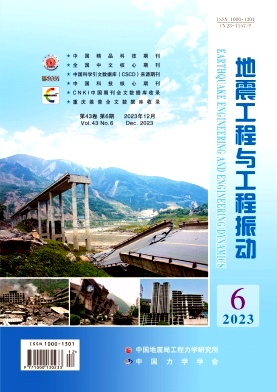LONG TERM MONITORING OF THE SANTA MARIA DI COLLEMAGGIO BASILICA
引用次数: 0
Abstract
. The Santa Maria di Collemaggio basilica is a 13th-century masonry masterpiece. The restoration works following the 2009 earthquake in L’Aquila included the installation of a permanent monitoring system. Crack gauges monitor a few significant cracks that appeared during the 2009 earthquake. Force-Balance accelerometers record the dynamic response of the entire structure. The dynamic response to ambient excitation leads to the estimation of the modal parameters. The current paper reports the outcomes of two years of static and dynamic monitoring from 1/1/2018 to 31/12/2019. The authors correlated the outdoor temperature and relative humidity to both the amplitude of the cracks and the modal parameters. The temperature deeply affects the static and dynamic response of the basilica. However, the linear correlations between the temperature and the structural response are diverse. There are cracks which stretch when the temperature rises and cracks which act oppositely. Natural frequencies lower when the temperature rises, while the same modes exhibit modal interaction phenomena. Furthermore, the natural frequencies of the basilica are not stationary but are moderately declining across the years. The basilica is a complex structure, where the different constitutive behaviour of three different materials, masonry, steel and timber may yield a varied structural response. The authors attempt to provide a qualitative interpretation of the observed behaviour, namely the detected correlations to the outdoor temperature, the lowering of the natural frequencies across the years and mode interaction phenomena.圣玛利亚大学大教堂的长期监测
. 圣玛利亚学院大教堂是一座13世纪的砖石杰作。2009年拉奎拉地震后的修复工作包括安装一个永久性监测系统。裂缝测量仪监测着2009年地震中出现的一些重大裂缝。力平衡加速度计记录整个结构的动态响应。对环境激励的动态响应导致模态参数的估计。本文报告了2018年1月1日至2019年12月31日两年静态和动态监测的结果。作者将室外温度和相对湿度与裂缝振幅和模态参数联系起来。温度对教堂的静、动态响应有深刻的影响。然而,温度与结构响应之间的线性关系是多种多样的。有的裂缝在温度升高时伸展,有的裂缝则相反。当温度升高时,固有频率降低,而相同模态表现出模态相互作用现象。此外,大教堂的自然频率不是固定的,而是逐年适度下降。大教堂是一个复杂的结构,其中三种不同的材料,砖石,钢和木材的不同本构行为可能产生不同的结构响应。作者试图对观测到的行为提供定性解释,即检测到的与室外温度的相关性,多年来自然频率的降低以及模式相互作用现象。
本文章由计算机程序翻译,如有差异,请以英文原文为准。
求助全文
约1分钟内获得全文
求助全文

 求助内容:
求助内容: 应助结果提醒方式:
应助结果提醒方式:


